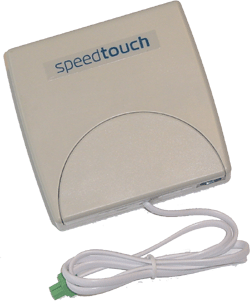What's the difference between a full rate filter and a normal filter (5-pin)
For all forms of DSL: SDSL, VDSL2 ADSL and ADSL2+
Physical quality of the cabling
All forms of Digital Subscriber Line or DSL (at edpnet, these are SDSL, VDSL2, ADSL2+ and (classical) ADSL) operate on existing telephony infrastructure: a copper line (copper pair) originating in the DSL local exchange (= LEX), and running over the so-called local loop up to the end user's premises.
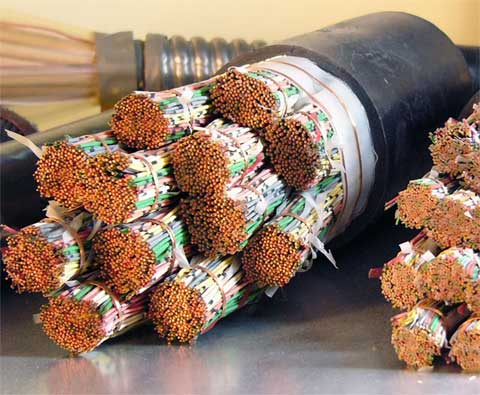
From the so-called intro point on, i.e. the entrance point of the telephone or ADSL line (or in case of a copper pair purely for DSL, without voice, as is the case with SDSL, this is called a raw copper line) into the building, it is the end user's full responsibility to keep this hardware, often referred to as internal cabling, in good condition.
So beware of damage to the plastic isolation of your telephone wiring, of oxidation of your phone sockets, of "bad contact" because of faulty do it yourself installation, etc. In other words: make sure you keep the physical quality of your end infrastructure in good shape: internal cabling, feeders, shunts, phone sockets, ADSL splitters, modem.
Cabling length
DSL is little more than a second, high-frequency signal that is being emitted over an active copper (phone) line. An initial important quality aspect is therefore all about quantity. The laws of physics claim that the further a signal needs to travel, the more it will weaken, and for high-frequency signals, such as DSL, this attenuation effect goes even more.
That is why edpnet is obliged to take into account at which distance you, the end user, are located from the DSL local exchange your line will be connected to. The smaller this distance, the higher the line speed we will be able to offer you. Unfortunately, the opposite is just as true: the further off from the exchange, the slower your internet connection will be.
For this very reason, it is very important that you try to limit the length of the cabling your DSL signal travels through to the absolute minimum. We advise you never to connect your DSL modem to an in-house cable longer than some seven meters. If this puts you in practical difficulties, it is better to use an ethernet modem (in stead of a USB modem), and to connect to the modem wirelessly or with a long network cable, as long as you keep the DSL copper line as short as possible.
ADSL on an active phone line: splitters/filters
On a shared ADSL line (i.e. ADSL on a line that is also being used for telephony), splitters (also called filters) are required, to separate the ADSL signal from the phone signal'. Because an analogous (PSTN) phone line's signal operates on a different, lower frequency band than a digital (ISDN) one's, there is a different kind of splitter and moem for each of these types of lines: Annex A for PSTN lines; Annex B for ISDN lines.
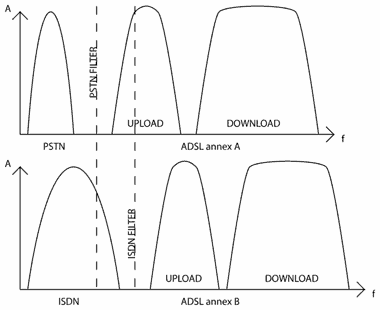
Remark: for raw copper ADSL lines, you need an Annex A modem, but since there is nothing but DSL, and no phone signal on a raw copper line, no splitters are required.
PSTN line splitters
There are two types of these splitters for the Belgian market: the five pins splitter (most common) and the full rate splitter.
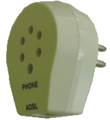 five pins splitter |
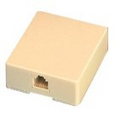 full rate splitter |
Five pins splitter
You necessarily have to mount such a five pins splitter on each wall socket of your ADSL line, the ones not in use as well.
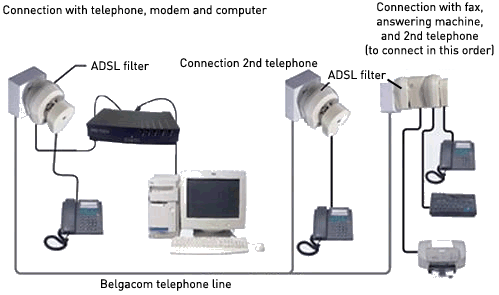
Full rate splitter
If there are three or more wall sockets, we advise you to place a full rate splitter. This full rate splitter is of higher technical quality, mounted at the beginning of the phone line, right next to the line's point of entry. This way, the ADSL signal is split off from the rest of the phone wiring as soon as possible, no matter how long it is. That is why, a full rate splitter is advisable in any case of long or outworn phone cabling, or lower quality cabling.
Also if you have an alarm or telephone exchange on your line, you need to filter away your ADSL signal with such a full rate splitter.
Moreover, a single full rate splitter is 'cheaper from three separate phone sockets on, each of which requiring a five pins splitter.
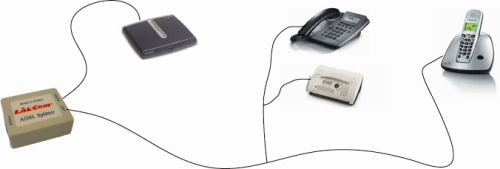
ADSL on an ISDN line: always a full rate splitter (Annex B)
There is only one type of splitter for ADSL on ISDN, a full rate type. This splitter may only be mounted on one place, i.e. before the NT1 or Twin box. In other words: to prevent the ADSL signals from disturbing the NT1 or Twin ISDN termination box, they need to be diverted from the line before they can ever reach the NT1 or Twin box. Hence, the full rate splitter has to be isntalled between the line's entry point and the ISDN box.
